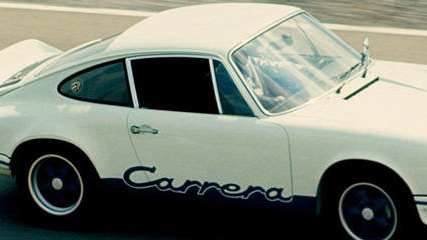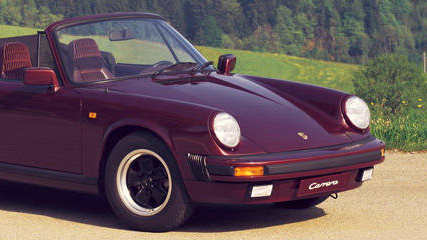Used Porsche 911 RS review: 1973
By Graham Smith · 03 Jul 2009
There are some classics that, while very desirable, are simply too expensive for all but the well-heeled collector. That’s the way it is with the 1973 Porsche 911 RS, the race tuned version of the iconic 911.A genuine RS would comfortably sell for half a million dollars on today’s market, which puts it out of the reach of most enthusiasts. But there is a way of enjoying the thrill of the RS for much less money. That’s in the form of a replica, a car that captures the essence of the original, but is created from a more affordable model like the later 911 3.2.MODEL WATCH The 1973 911 Carrera RS is one of the most desirable and collectable Porsches of all. In its time the RS was one of the fastest production sports cars on the market.To create the RS Porsche took the 911S, also a very desirable classic sports car today, and put it on a diet that would see it shed 100 kg by doing things like removing the rear seat and the dash board clock, using thinner body panels, and fabric pulls to open the doors instead of regular handles, and covering the floor in rudimentary rubber mats.By the time it was over the RS had been trimmed to just over 1000 kg, but the Porsche formula for speed went further than mere weight loss. The flat-six engine was bored out to 2.7 litres, and with Bosch fuel-injection delivering the fuel it put out a healthy 157 kW. With its power boosted and its weight trimmed the RS was fast. It required just 5.7 seconds to reach 100 km/h, and would do 240 km/h when pushed to the limit.Not only did it do the business on the road it also looked the part with its large bootlid spoiler, front airdam, bold Carrera graphics down each side, and Fuchs alloy rims. It’s no wonder the RS is held in such high esteem by Porsche aficionados. Equally, given Porsche only made 1000 or so, it’s not surprising that RS prices are now so high. It shouldn’t be a surprise then that it has attracted replica makers.The RS is an ideal car to replicate. It was based on the regular Porsche 911, which didn’t change very much over a long period of time from the 1960s to the mid-’80s. The later 911 3.2 is the most obvious model to use as the base for a replica. It was released in the early 1980s and continued in production until late in the decade. It not only provides a sound foundation, requiring little modification to the body, it’s also affordable and there are heaps available here and overseas.IN THE SHOP Sydney company ZAG Automotive specialises in RS replicas. It takes a 911 3.2, mostly imported from Asia where there is an abundance of potential donor cars, and does a complete bare body rebuild on them with a range of genuine and reproduction RS parts to create a car that fits the image of one of Porsche’s most treasured classics.They usually retain the 3.2-litre engine and the gearbox that came with the car, but rework the car visually to recreate the credibility of the original RS.Buyers have a choice of options, from sunroof, air-conditioning, sound systems, and power windows among a comprehensive list of choices. They can also choose their colours, the original RS came in white with blue, green or red graphics, but ZAG will paint a car to the owner’s wishes. There is also a range of details the owner can nominate to achieve the appropriate level of authenticity.The cars are mostly left-hand drive when they arrive and are converted to right-hand drive in the build process. Once completed they require the approval of an engineer before they can be registered, and the requirements can vary from state to state so it’s well worth doing your homework to establish the requirements for your state.IN A CRASH Porsche body strength has never been questioned and that’s the primary crash protection in the early 911 and the replicas. There were no airbags, so safety reverts to the basics of construction, handling, braking and roadholding with the Porsche.AT THE PUMP If your priority is fuel economy read no further as the 911, and the replicas, are high performance cars and like to drink lots of fuel.OWNER SAYS Rohan Veal says he has wanted a classic 911 for as long as he can remember, and he set himself a goal of having one by the time he turned 30. He achieved his goal earlier this year when he took delivery of his 911 RS replica from ZAG Automotive.By then he had already owned a genuine four-cylinder 912, but found it was too good to drive. He was always worried about damaging it to really enjoy the driving experience. There are no such concerns about the replica. “I just want to drive it,” he said. “I won’t pay half a million dollars on a car to polish.”LOOK FOR • the ultimate classic Porsche look.• raw-boned performance• great rasping engine sound• affordable exotic• easy to drive dailyTHE BOTTOM LINE Not the real thing, but close enough it delivers the thrill of the original, at a price that won’t break the bank.RATING 78/100










